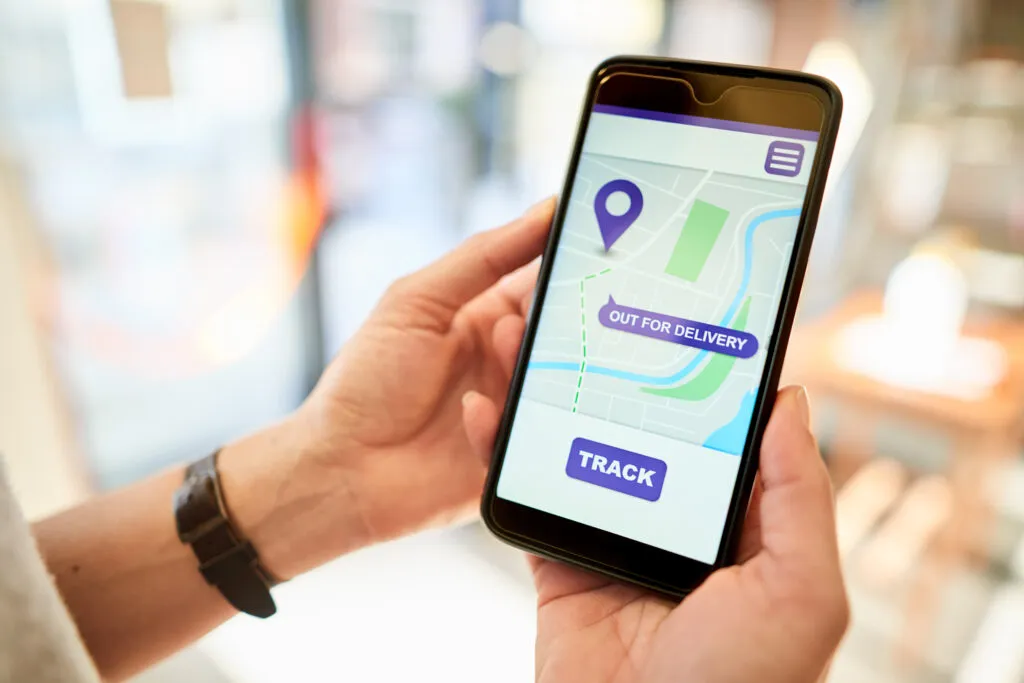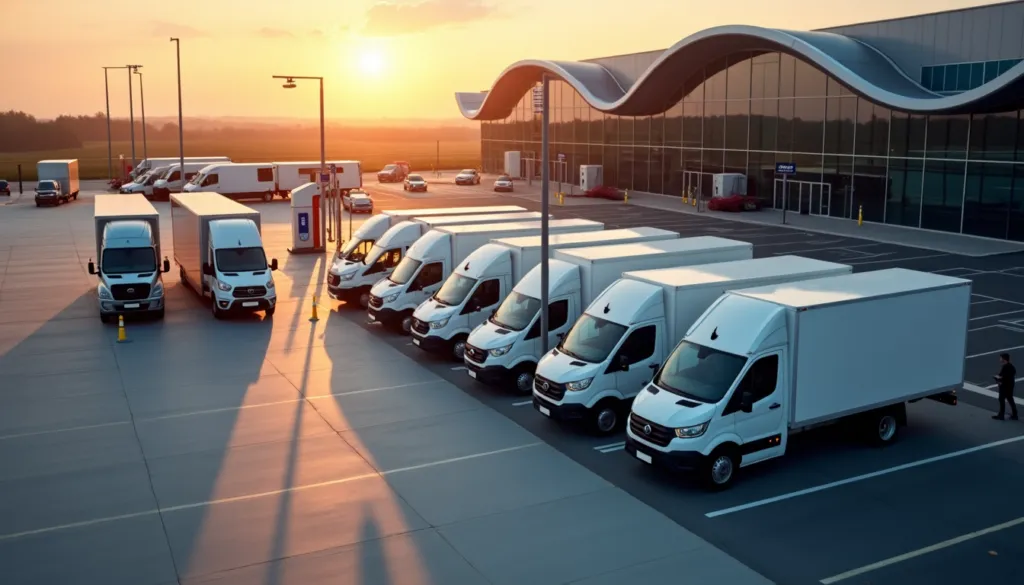
Get home early with RoadWarrior.
Enter your stops, optimize your routes, manage your team – quickly and efficiently.
Try RoadWarrior free for 7 days
Try free for 7 daysDelivery businesses are constantly seeking ways to optimize their operations, increase efficiency, and minimize costs. One crucial aspect of achieving these goals is route planning. By selecting the most fuel-efficient routes, businesses can not only save on fuel costs but also reduce their carbon footprint. While many businesses rely on Google Maps for navigation, it is essential to evaluate whether it offers a desirable ecosystem for delivery drivers. In this article, we will explore how Google Maps can be used for fuel-efficient route planning, discuss its limitations, and present a professional route planning alternative that can address these drawbacks effectively.
Google Maps: Fuel-Efficient Routing Made Easy
Google Maps has become a household name when it comes to navigation, boasting over 23 million downloads globally. The platform is widely used across 45 countries and 3000+ cities, offering access to over 5 million miles of street view. Recognizing the importance of fuel efficiency, Google Maps has updated its routing model to help delivery businesses create the most fuel-efficient routes and minimize CO2 emissions.
Google Maps Eco-friendly Routing
One of the recent updates to Google Maps is the introduction of eco-friendly routing. This feature enables delivery drivers to reach their destination using shortened paths with lower fuel consumption. By leveraging powerful route planning AI and insights from the National Renewable Energy Laboratory, Google Maps can provide eco-friendly routes that prevent millions of tons of carbon emissions each year.
Google Maps displays the most fuel-efficient route combined with the fastest route, allowing users to choose the option that best suits their needs. The application offers turn-by-turn directions for different types of AI-suggested paths. With just a few clicks, users can check the estimated time of arrival (ETA) and the relative fuel savings between different routes, helping them make informed decisions to maximize productivity and minimize fuel consumption during deliveries.
Drawbacks of Google Maps for Delivery Businesses
While Google Maps is a popular choice for navigation in one’s everyday lives, it falls short when it comes to meeting the complex needs of delivery businesses. Here are some of the key limitations:
1. No Bulk Scheduling
Google Maps does not offer delivery route scheduling beyond ten stops, limiting its usability for businesses with larger-scale operations. As a result, businesses cannot rely on the software to assist delivery drivers in handling their work operations.
2. Lack of Automation
Although Google Maps allows users to prefer fuel-efficient routes, it does not offer automation features that can assist with scheduling and dispatching delivery jobs. This lack of automation creates complexities for delivery businesses, as the application is not designed to cater specifically to the needs of delivery drivers and businesses.
3. Communication Challenges
Google Maps does not allow communication between management and the on-ground delivery team. This lack of communication can hinder the smooth flow of operations, preventing real-time changes and impeding the delivery of a quality customer experience. Without a reliable way to communicate with different teams, the management team cannot assist delivery drivers in navigating through different difficulties during the execution of deliveries.
4. Limited Reporting Capabilities
Google Maps does not provide detailed reports for delivery businesses to analyze business and employee performance and optimize workflow. Without access to key metrics such as trip progress, ETA differences, and the number of vehicles in operation, businesses cannot enhance their delivery operations to achieve their desired outcomes.
5. Lack of Central Control
Google Maps does not offer centralized control over delivery business operations. Without a powerful dashboard and the ability to easily access different business details, businesses are unable to keep track of the number of vehicles on the road and monitor progress towards daily delivery targets effectively.
These drawbacks can hinder the growth of delivery businesses and restrict their ability to deliver a quality customer experience. While Google Maps can help extract eco-friendly routes, it falls short in addressing other complex issues involved in managing delivery business workflows.
Professional Route Planning Software: A Better Solution
To overcome the limitations of Google Maps and achieve optimal efficiency and productivity, delivery businesses should consider using professional route planning and optimization software. One such solution is RoadWarrior Flex. RoadWarrior Flex offers a range of quality features at a reasonable price, making it an excellent choice for streamlining delivery operations and making fuel-efficient and sustainable choices.
Why RoadWarrior Flex is the Ultimate Solution
RoadWarrior Flex stands out as a professional route planning software that offers unparalleled capabilities for delivery businesses. Here’s why it’s a better solution than Google Maps:
1. Advanced Route Planning and Optimization
RoadWarrior Flex provides fast and efficient route planning and optimization, surpassing the capabilities of standard navigation apps like Google Maps. With its superior speed and accuracy, RoadWarrior Flex can help businesses save time and fuel costs, ultimately increasing their delivery efficiency.
2. Centralized Control and Reporting
Unlike Google Maps, RoadWarrior Flex offers centralized control over delivery business operations. Through a powerful dashboard, businesses can easily monitor the number of vehicles on the road and track progress towards daily delivery targets. Additionally, RoadWarrior Flex provides detailed reports with key metrics, allowing businesses to analyze performance and optimize workflow effectively.
3. Seamless Communication
RoadWarrior Flex addresses the communication challenges faced by delivery businesses. It offers a robust dashboard that operates as a communication hub, enabling smooth and real-time communication between the dispatcher and the on-ground delivery team. This ensures that important details can be shared, facilitating adjustments as needed and enhancing the overall delivery experience for customers.
4. User-Friendly Interface
RoadWarrior Flex is designed with user-friendliness in mind. Its intuitive interface makes it easy for delivery drivers and businesses to navigate and leverage its powerful features. With RoadWarrior Flex, businesses can quickly adapt to the software, ensuring a seamless integration into their existing workflows.
In conclusion, while Google Maps offers some useful features for fuel-efficient route planning, it falls short in meeting the complex needs of delivery businesses. To overcome its limitations and achieve optimal efficiency and productivity, businesses should consider using professional route planning and optimization software like RoadWarrior Flex. With its advanced capabilities, centralized control, seamless communication, scalability, and user-friendly interface, RoadWarrior Flex is the ultimate solution for delivery businesses looking to maximize efficiency, minimize costs, and deliver a quality customer experience. Experience the transformation for yourself by availing the 7-day free trial of RoadWarrior Flex today!


